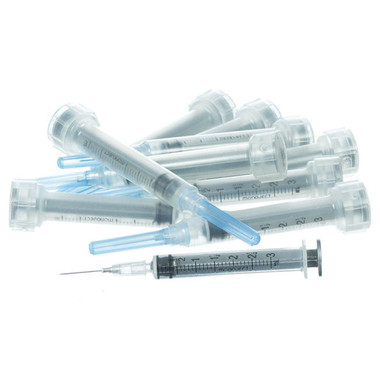RE-COVR™ (Tripelennamine Hydrochloride Injection, 20mg/mL): An Old Favorite Making A Big Impact Again
Estimated 0 min read
Two years after its return to the U.S. veterinary clinic, RE-COVR has firmly reestablished its place in the veterinary toolkit. This FDA-approved, injectable antihistamine—featuring trusted and venerable tripelennamine hydrochloride—continues to earn praise for its effectiveness in managing respiratory issues, allergic reactions, and histamine toxemias in beef cattle, dairy cattle and horses.
A mainstream and a well-established therapy decades ago, RE-COVR had been unavailable for years due to challenges in finding an FDA-approved source of the active pharmaceutical ingredient (API). Since returning to the market, RE-COVR has been embraced once again by veterinarians, producers, and livestock operations across the country for its reliable performance in herd health management.
BUILT ON A STRONG HISTORY
RE-COVR isn’t new to most large animal vets—it’s a product many remember using early in their careers, or even riding along with parents or mentors who used it in the field.
“RE-COVR was one of those practical, dependable tools we always had on hand,” said Dr. Stuart Pierce, DVM, co-founder of the company that brought it back to the U.S. veterinary market. “We knew what it could do for respiratory cases, allergic reactions, or sudden-onset toxemias—and we really missed it when it was gone.”
That legacy of trust was a key reason Kinetic Vet worked so diligently to bring RE-COVR back to the U.S. veterinary market, while ensuring it met current FDA standards, which included the original and time-tested formulation that made it so valuable in the first place. Today, RE-COVR is once again manufactured in the U.S. using a domestically sourced API, and it’s labeled for use in beef cattle, dairy cattle, and horses.
A PROVEN ASSET IN CATTLE HEALTH
In the two years since its return, RE-COVR has become a vital part of treatment protocols for respiratory conditions, coliform mastitis, and allergic reactions in beef and dairy cattle. It works quickly to block histamine activity, reducing inflammation and supporting recovery—often alongside the administration of antibiotics or NSAIDs.
“Think of RE-COVR as a source of Benadryl for livestock—but without the drowsiness,” said Dr. Pierce. “It’s easy to administer, it’s effective, and it integrates well into multi-modal treatment plans.”
From Midwestern dairies to large-scale beef operations out West, veterinarians are using RE-COVR to manage complex histamine-driven conditions and improve outcomes for their herds. In one case, a dairy producer reported dramatic improvement in coughing and nasal discharge within a day of adding RE-COVR to their respiratory protocol.
Beyond respiratory health, RE-COVR has been noted by veterinary practitioners to have an application in managing reproductive conditions linked to uterine inflammation, another area where histamine plays a role.
EQUINE APPLICATIONS CONTINUE TO GROW
RE-COVR is also gaining traction in equine practices, particularly for horses affected by severe equine asthma (SEA), insect bite hypersensitivity, and other allergic conditions. Its intramuscular-only administration makes it straightforward to use in the field.
“We’ve heard from equine veterinarians who are seeing significant improvement in horses with SEA—sometimes in as little as 12 hours after administration,” said Dr. Pierce. “It’s rewarding to see the product making such a difference across species.”
BRIDGING PAST AND PRESENT
RE-COVR’s successful reintroduction is part of Creative Science’s broader commitment to bridging the gap between legacy products and today’s regulatory and clinical standards.
“Just because a product was taken off the market doesn’t mean it stopped working,” said Dr. Pierce. “RE-COVR had a proven track record. All it needed was someone willing to do the work to bring it back to the U.S. veterinary market the right way.”
With more than 30 products in its portfolio, Creative Science is focused on revitalizing effective, research-backed solutions that veterinarians trust—and their animal patients benefit from. RE-COVR is a shining example of that mission in action.
Still as dependable as ever—and now fully compliant with current FDA regulatory standards—RE-COVR is here to support herd health for the long haul.
Horses: For intramuscular injection only!
Cattle: For intravenous or intramuscular injection.
Caution: Federal law restricts this drug to use by or on the order of a licensed veterinarian.
Note: Before using this drug, read and review the RE-COVR bottle label and package insert for full prescribing information, as well as withdrawal times for milk and meat.
This blog post is based on insights originally published in the article “RE-COVR: Making a Return from the Past” by Deborah Comeron, featured in the Fall 2022 issue of InSight Livestock by Animal Health International. Content has been adapted and summarized with attribution. To read the full original article, visit the InSight Livestock digital edition.













